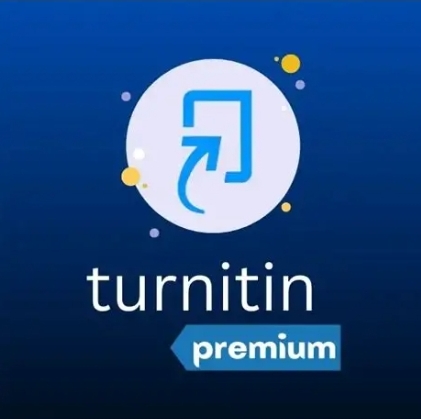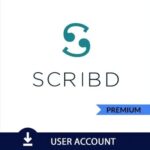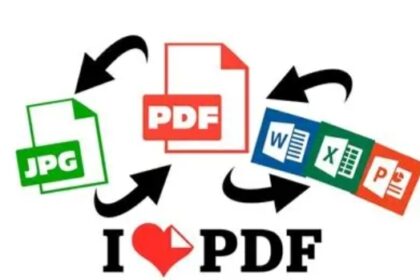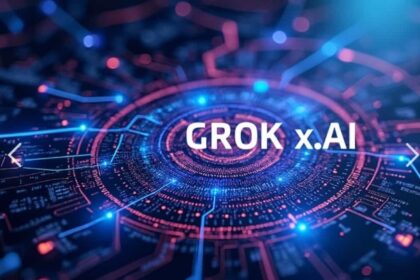The moment you hit “submit” on a major paper is filled with a mix of relief and anxiety. But in modern academia, there’s often one more step in that process: the Turnitin check.
The name alone can cause a flutter of panic for students and create a mountain of data for educators.
But what exactly is Turnitin? Is it just a “plagiarism police” waiting to catch you out? Or is it a tool that can actually help you become a better writer?
This ultimate guide will demystify Turnitin completely. We’ll break down how it works, how to interpret its famous “Similarity Report,” explore its controversial new AI detection feature, and provide actionable tips for both students and educators.
What Exactly is Turnitin?
At its core, Turnitin is a text-matching software designed to promote academic integrity and improve student writing.
While it’s most famous for its plagiarism detection capabilities, its full purpose is much broader.
Think of it less as a detective and more as a highly advanced proofreader. It doesn’t actually detect plagiarism—it detects similarity. It highlights passages in a student’s paper that match content from its massive database.
It is then up to the educator to use their professional judgment to determine if that similarity constitutes plagiarism (e.g., a forgotten citation) or is perfectly acceptable (e.g., a correctly formatted quote).
For Students: It’s a tool to check your work for unintentional citation errors and improve your paraphrasing skills.
For Educators: It’s a tool to uphold academic standards and open up teachable moments about proper sourcing and original thought.
How Does Turnitin Work? The Magic Behind the Match
When a paper is submitted to Turnitin, it undergoes a three-step process that happens in a matter of minutes.
Step 1: Submission
An instructor creates an assignment in their learning management system (like Canvas, Blackboard, or Moodle) with Turnitin enabled. The student uploads their document to this assignment.
Step 2: Comparison
Turnitin’s powerful algorithms scan the document and compare its text against a vast and constantly growing database that includes:
-
Over 99 billion current and archived web pages.
-
Over 1.8 billion student papers from institutions around the world.
-
Over 82 million articles from scholarly journals, books, and publications.
Step 3: The Similarity Report.
The software generates a Similarity Report that provides a percentage score and a detailed, color-coded view of the paper. This report is the key to understanding Turnitin’s findings.
Decoding the Turnitin Similarity Report (H2)
The Similarity Report is where the action happens. Seeing a percentage can be intimidating, but it’s crucial to understand what it means.
The Similarity Score: More Than Just a Number
The percentage score represents the proportion of the paper’s text that matches sources in the Turnitin database. This is NOT a “plagiarism score.” A high score doesn’t automatically mean you cheated, and a low score doesn’t guarantee your paper is perfect.
Context is everything. A paper with a 25% similarity score might be perfectly fine if that 25% consists of properly cited quotes, a bibliography, and common phrases.
Conversely, a paper with a 5% score could contain serious plagiarism if that 5% is a key idea stolen from another source without credit.
Understanding the Color-Coded Report
Turnitin uses a color scale to give you an at-a-glance idea of the similarity level:
-
Blue (0%): No matching text found.
-
Green (1-24%): Typically a good score, likely representing common phrases or properly cited sources.
-
Yellow (25-49%): Warrants a closer look. Could be due to extensive quoting or some paraphrasing issues.
-
Orange (50-74%): Indicates significant matching text. This often requires careful review by the instructor.
-
Red (75-100%): A very high level of matching text, which is a major red flag.
By clicking on the highlighted passages, you can see the original source that Turnitin has matched, helping you or your instructor analyze the context of the match.
The New Frontier: Turnitin and AI Writing Detection
With the rise of powerful AI tools like ChatGPT, a new challenge to academic integrity has emerged. In response, Turnitin has integrated an AI writing detection feature.
This tool analyzes the writing in a submission, looking for patterns that are characteristic of AI-generated text, such as uniform sentence structure and predictable word choice.
It then provides a separate percentage indicating the likelihood that the text was written by AI.
However, this technology is new and not without controversy. There have been reports of false positives, where human-written text is flagged as AI-generated.
Most institutions advise educators to use the AI score as just one piece of evidence in a larger conversation with the student, rather than as definitive proof of misconduct.
Tips for Students: Using Turnitin to Your Advantage
Don’t fear Turnitin—use it as a tool for improvement.
-
Paraphrase Properly: Don’t just swap out a few words (this is called “patchwriting”). Read a source, understand its core idea, and then explain it entirely in your own words and sentence structure.
-
Cite Everything: When in doubt, cite it. This includes ideas, statistics, and paraphrased information, not just direct quotes.
-
Use Quotation Marks: For any text taken verbatim from a source, use quotation marks and a proper citation. Turnitin will flag this, but your instructor will see it is correctly cited and ignore the match.
-
Check Your Draft (If Possible): Many instructors allow students to submit drafts to Turnitin before the final deadline. This is a golden opportunity to review your Similarity Report and fix any unintentional errors.
-
Don’t Panic at the Score: If your score is higher than you expected, calmly review the report. Are the matches from your bibliography? Are they properly cited quotes? Use the report as a final proofreading checklist.
A Note for Educators: Turnitin as a Teachable Moment
For instructors, Turnitin is most effective when used as a teaching instrument, not a punitive one.
-
Educate Students: On the first day of class, explain what Turnitin is, how you use it, and what your expectations are regarding similarity scores.
-
Allow Draft Submissions: This empowers students to take ownership of their academic integrity and learn from their mistakes in a low-stakes environment.
-
Focus on Context: Use the Similarity Report as the start of a conversation. A high score could indicate a student who is struggling with paraphrasing, not a student who is intentionally cheating.
-
Be Cautious with the AI Detector: Treat the AI score as an indicator, not an accusation. Use it to prompt a discussion about the writing process with the student.
Frequently Asked Questions (FAQ).
Is a 20% similarity score on Turnitin bad?
Not necessarily. A 20% score is often perfectly acceptable and can be attributed to correctly cited quotes, a works cited page, and common phrases. Always review the full report for context.
Does Turnitin keep my paper?
Yes, by default, submitted papers are stored in Turnitin’s proprietary student paper database to be used as a source for future comparisons. This prevents students at different institutions from submitting the same paper.
Can Turnitin detect paraphrasing?
It can detect poorly done paraphrasing (patchwriting). If you’ve simply changed a few words or rearranged the sentence slightly, the software will likely still flag it as a match. Proper paraphrasing in your own unique voice is much less likely to be flagged.
Can you trick Turnitin?
Students have tried everything from using foreign characters to hiding text in white font. Turnitin’s algorithms are constantly updated to detect these tricks, and attempting to do so is a serious academic offense that is often easier to prove than the plagiarism itself.
Conclusion: A Tool for Integrity, Not a Verdict
Turnitin is a powerful and complex tool that has fundamentally changed the landscape of academic writing. When misunderstood, it can be a source of fear. But when understood and used correctly, it becomes an invaluable partner in the educational journey.
For students, it’s a safety net that helps you learn the crucial skills of citation and original expression.
For educators, it’s a resource to uphold academic standards and guide students toward becoming more confident, ethical writers.
By embracing it as a tool for learning, we can move beyond the fear and focus on what truly matters: the pursuit of knowledge with integrity.
| Name | Links |
|---|---|
| Website | Turnitin |
| Status | Working |
| Last Update | Today |
| Cookies 1 | Click Here |
| Cookies 2 | Click Here |
| Buy Personal Account | Chat Admin |
| How to use? | Tutorial |
| Telegram | Just Premium |














